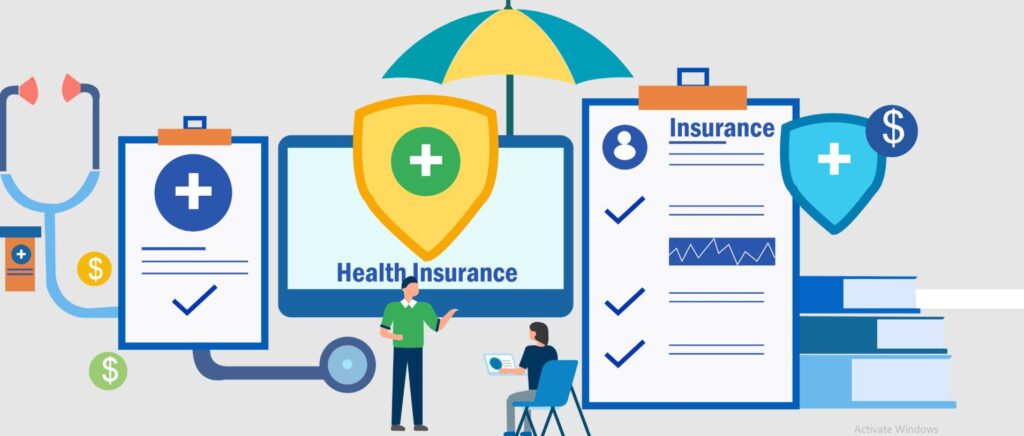Understanding the U.S. Healthcare System: How to Navigate Health Insurance and Services
The healthcare system in the United States is multifaceted, often complicated, and can be difficult to navigate without a solid understanding of the available options and structures. From health insurance plans to accessing medical services, it’s crucial to comprehend how the system operates. This comprehensive guide breaks down key components of the U.S. healthcare system, covering insurance types, cost structures, and tips for accessing medical services efficiently.
Overview of the U.S. Healthcare System
The U.S. healthcare system is a mix of public and private services, offering a range of options for citizens and residents. Unlike many countries with nationalized healthcare systems, the U.S. primarily relies on private insurance, alongside government-funded programs. This complexity can make it difficult for individuals to navigate without understanding the core elements of health insurance, cost management, and service access.
Key Players in U.S. Healthcare
Several key entities play significant roles in delivering and managing healthcare in the United States:
- Private Health Insurance Providers: Most Americans access healthcare through private insurance plans, typically provided by employers or purchased individually.
- Government Programs: Programs such as Medicare (for those over 65 or with disabilities), Medicaid (for low-income individuals), and the Affordable Care Act (ACA) Marketplace help cover uninsured or underinsured populations.
- Healthcare Providers: These include hospitals, doctors, specialists, and clinics that deliver healthcare services to patients.
Navigating Health Insurance in the U.S.
Understanding health insurance options and the specific terms of your plan is crucial to making informed healthcare decisions. U.S. health insurance comes in several forms, each with its own set of benefits, costs, and restrictions.
Types of Health Insurance Plans
Private Health Insurance
Private health insurance is often obtained through an employer, though individuals can also purchase plans directly. Key types include:
- Health Maintenance Organization (HMO): Offers lower premiums and requires members to choose a primary care physician (PCP). Referrals are necessary for specialists.
- Preferred Provider Organization (PPO): Provides more flexibility in choosing healthcare providers, allowing access to specialists without referrals, but at a higher cost for out-of-network care.
- Exclusive Provider Organization (EPO): Similar to PPOs, but does not cover out-of-network care except in emergencies.
Government-Sponsored Insurance
- Medicare: Federal insurance program for individuals aged 65 and older, and for some younger individuals with disabilities. It includes hospital insurance (Part A), medical insurance (Part B), and prescription drug coverage (Part D).
- Medicaid: A joint federal and state program that helps with medical costs for low-income individuals, families, and certain disabled individuals. Eligibility varies by state.
- The Affordable Care Act (ACA) Marketplace: A public option for purchasing private insurance, with subsidies for those who qualify based on income.
Choosing the Right Health Insurance Plan
Selecting the best health insurance plan depends on several factors:
- Premiums: This is the monthly amount you must pay for coverage, regardless of whether you use healthcare services.
- Deductibles: This is the amount you must pay out-of-pocket before your insurance begins to cover costs. Lower deductibles typically mean higher premiums.
- Co-pays and Coinsurance: These are out-of-pocket costs for services. A co-pay is a fixed amount, while coinsurance is a percentage of the total cost.
Understanding these terms and carefully evaluating different plans will help ensure you select the best option for your healthcare needs.
Cost Structures in U.S. Healthcare
Healthcare costs in the U.S. are among the highest in the world. Several factors contribute to these high costs, including insurance premiums, out-of-pocket expenses, and the price of medical services.
Cost Components of Healthcare
- Out-of-Pocket Costs: These include deductibles, co-pays, and coinsurance. Depending on your plan, these costs can vary significantly.
- Prescription Drugs: The cost of medications is often one of the most significant out-of-pocket expenses for individuals. Insurance plans typically cover a portion of the cost, but the remainder is paid by the individual.
- Preventive Care: Preventive services, like screenings and vaccinations, are often covered by insurance without co-pays or deductibles under the Affordable Care Act.
How to Manage Healthcare Costs
- Understand Your Plan: Know the details of your insurance, including your deductible, co-pays, and out-of-pocket maximums.
- Use Preventive Services: Taking advantage of preventive care can reduce the likelihood of developing expensive health issues down the road.
- Consider Health Savings Accounts (HSAs): If eligible, HSAs offer tax advantages for saving and paying for medical expenses.
Accessing Healthcare Services in the U.S.
Healthcare in the U.S. is not always easy to access, especially with the variation in availability between urban and rural areas, as well as insurance restrictions.
Choosing Healthcare Providers
- Primary Care Physicians (PCPs): Most insurance plans require you to select a primary care physician. PCPs manage your overall healthcare and can refer you to specialists if necessary.
- Specialists: If you need specialized care, you may need a referral from your PCP, especially under HMO plans. PPO plans offer more flexibility in seeing specialists directly.
- Emergency Services: Emergency medical services are available at hospitals, but it is important to be aware that non-emergency visits to the emergency room can be extremely expensive.
Utilizing Urgent Care
For non-life-threatening conditions, urgent care centers can be an affordable and convenient alternative to emergency rooms. They typically offer treatment for conditions like minor injuries, infections, and common illnesses.
Telemedicine and Virtual Care
Telemedicine allows patients to consult healthcare providers remotely, saving time and reducing the need for in-person visits. Virtual care is particularly beneficial for routine consultations, follow-up appointments, and minor health concerns.
Health Insurance Marketplaces and Subsidies
The Health Insurance Marketplace created under the Affordable Care Act (ACA) provides a platform for individuals and families to purchase insurance. The marketplace offers a range of plans and eligibility for subsidies based on income, which can make insurance more affordable.
How to Use the Marketplace
- Eligibility: Anyone can use the marketplace, but subsidies are available only to those who meet income requirements.
- Navigating the Marketplace: The marketplace is user-friendly, allowing you to compare plans based on coverage options, premiums, and out-of-pocket costs.
- Subsidies: If your income is between 100% and 400% of the federal poverty level, you may qualify for subsidies to lower the cost of premiums.
Medicare and Medicaid Enrollment
- Medicare: Enrollment begins three months before you turn 65 and continues for seven months. It’s important to sign up during your initial enrollment period to avoid penalties.
- Medicaid: Enrollment is year-round for those who qualify. States administer Medicaid, so eligibility requirements and benefits can vary.
How to Avoid Common Healthcare Pitfalls
The U.S. healthcare system can be overwhelming, but there are ways to avoid common pitfalls:
- Review Your Bills: Errors in billing are common. Always review your medical bills for accuracy, ensuring that the services charged align with the care you received.
- Stay In-Network: Out-of-network care can be significantly more expensive. Ensure that your providers are within your insurance network to reduce costs.
- Appeal Denied Claims: If your insurance denies coverage for a treatment or service, you have the right to appeal the decision. Take advantage of this process to potentially reverse denials.
Conclusion
Understanding the U.S. healthcare system is vital for anyone navigating medical care in the country. From selecting the right insurance plan to knowing how to access services, the complexities of the system can seem daunting. However, with the right knowledge and resources, you can make informed decisions that ensure access to quality healthcare while managing costs effectively. Always stay informed about changes in healthcare policies and available resources, as this will allow you to make the best choices for your health and financial well-being.





















